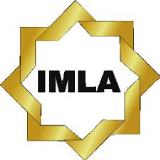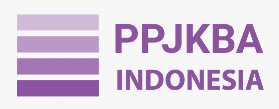Learning Arabic For Children (Analysis of the Application of the Amtsilati Method to MIT Nurul Islam Semarang)
DOI:
https://doi.org/10.22515/athla.v3i2.5648Keywords:
Arabic, Children, AmtsilatiAbstract
Arabic language learning for children in urban areas is far from ideal. Arabic in Indonesia is commonly identified with Pesantren and does not receive enough attention in urban areas. However, at MI Nurul Islam Semarang City, Arabic language learning for children gets enough attention from the founding father. Parents through committees often hold meetings to discuss children's learning achievements, including Arabic. One of the forms of attempt is to apply the Amtsilati method in Arabic language learning. The Amtsilati method is an alternative for Arabic teachers to make it easier for children to understand grammatical and word form in Arabic. To find out the information, researchers use field-based qualitative research methods with a descriptive approach. The required data is obtained by observation, interview, and documentation. The study found that the Amtsilati method is based on memorizing Arabic rules through song verses that are equipped with examples and adjusted to the level of children's abilities. Using this method, students who are able to learn Arabic well can even explain the arrangement and position of words in Arabic sentences. So that this finding becomes a recommendation for Arabic teachers so it can be used in Arabic learning, especially for learning Arabic grammar.
Downloads
References
Fikri, W. N. (2018). IMPLEMENTASI METODE AMTSILATI DALAM MEMBACA KITAB KUNING DI PONDOK PESANTREN HIDAYATUL MUBTADIIN DEMAK. POTENSIA: Jurnal Kependidikan Islam, 4(2), 126–137.
Hafidah. (2020). Learning Qawa’id Al-Lughah Al-’Arabiyyah with Active Learning Strategies / Pembelajaran Qawa’id Al-Lughah Al-’Arabiyah dengan Strategi Pembelajaran Aktif. ATHLA : Journal of Arabic Teaching, Linguistic And Literature, 1(1), 77–90.
Mahmud, B., & Hamzah. (2020). Pembelajaran Efektif dalam Pengajaran Bahasa Arab Tingkat Menengah. Loghat Arabi: Jurnal Bahasa Arab & Pendidikan Bahasa Arab, 1(1), 23–36.
Moh Nazir. (2005). Metodoogi Penelitian. Ghalia.
Muzaffar, A., Irfan, A., & Za, T. (2020). KEMAMPUAN PEDAGOGICAL CONTENT KNOWLEDGE ALUMNI PENDIDIKAN BAHASA ARAB FAKULTAS TARBIYAH DAN KEGURUAN UIN AR-RANIRY BANDA ACEH. DIDAKTIKA, 21(1), 41–60.
Naseha, S. D., & Muassonah. (2018). MODEL PEMBELAJARAN ILMU SHARAF DENGAN MENGGUNAKAN METODE INQUIRY DAN METODE SNOWBALL TASHRIF. Al Fazuna, 3(1), 103–122.
Nuruddin. (2016). ANALISIS KEBUTUHAN BAHAN AJAR BAHASA ARAB BAGI CALON TENAGA KERJA INDONESIA (TKI) DI TIMUR TENGAH. Bahasa Dan Seni, 44(2), 149–161. http://www.aksesdeplu.com/bekali%20diri20laput-
Rahmatullah, A. A. (2022). Metode Takroran dalam Pembelajaran Kitab Amtsilati di Pondok Pesantren Hidayatul Mubtadi’in Gurah Kediri Perspektif Teori Belajar Kognitif. Mahira: Journal of Arabic Studies and Teaching, 1(1), 1–13. https://doi.org/10.29240/jbk.v1i2.331
Sari, R. R. (2020a). Peran Guru dalam Pembelajaran Kreatif Bahasa Arab ditinjau dari Perspektif Al-Qur’an. Arabia, 12(2). https://doi.org/10.21043/arabia.v12i2.7445
Sari, R. R. (2020b). Peran Guru dalam Pembelajaran Kreatif Bahasa Arab ditinjau dari Perspektif Al-Qur’an. Arabia Jurnal Pendidikan Bahasa Arab, 12(2), 1–18. https://doi.org/10.21043/arabia.v12i2.7445
Sari, W. S. (2017). Analisis Kesulitan Pembelajaran Nahwu Pada Siswa Kelas VIII MTs Al Irsyad Gajah Demak Tahun Ajaran 2015/206. LISANUL ARAB: Journal of Arabic Learning and Teaching, 6(1), 16–20. http://journal.unnes.ac.id/sju/index.php/laa
Taufikul Hakim. (2004). Tawaran Revolusi Sistem Pendidikan Kasional. PP Darul Falah.
Downloads
Published
How to Cite
Issue
Section
Citation Check
License
Copyright (c) 2022 Moh Syakur

This work is licensed under a Creative Commons Attribution-ShareAlike 4.0 International License.










